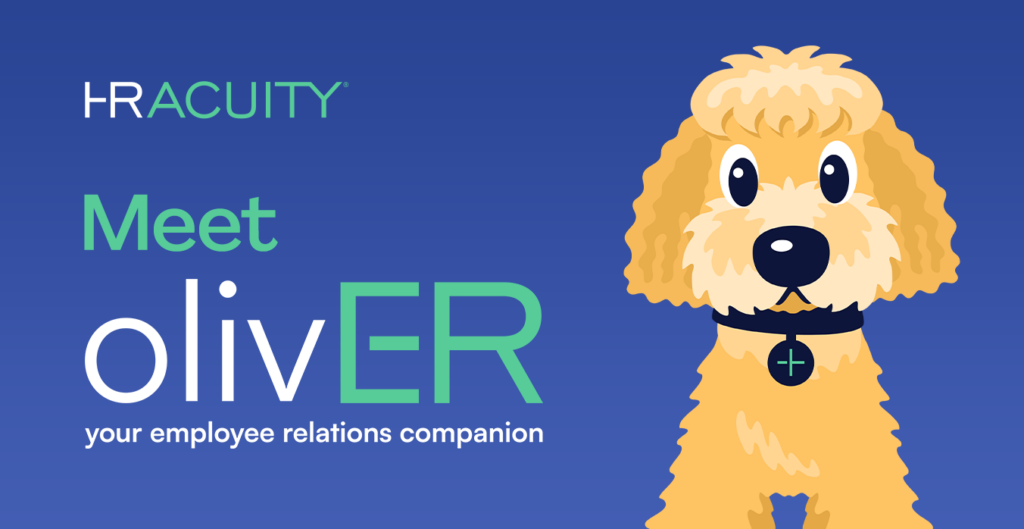Employee relations (ER), often part of the human resources (HR) department, is responsible for creating positive relationships and cultivating a favorable work environment that increases employee engagement, productivity and satisfaction. The most successful ER programs combine sound legal practices, effective communication and performance management with a focus on creating a positive workplace culture that improves employee retention.
What is the Definition of Employee Relations?
Employee relations is really much more than policy setting, policing behavior, conducting investigations and managing conflicts. HR Acuity defines employee relations as:
- The function that brings the legal and emotional contract between employers and employees to life.
- Those responsible for nurturing their culture in a transparent manner and maintaining healthy, legal relationships that conform to the company’s values and policies at a workforce, team and individual level.
Good employee relations is about creating a company culture that improves the employee experience, leads to higher employee satisfaction and, ultimately, results in increased employee retention. It establishes trust and an atmosphere in which workers feel comfortable approaching their HR group, believing they will be treated with dignity and respect, and that the appropriate steps will be taken.
The ongoing Great Resignation, or “Great Reshuffling,” amplifies the significance of employer-employee relations in the implementation of initiatives that foster open communication, respectfulness, honesty and trust — creating a corporate climate that encourages employees to stay.
How Is Employee Relations Different From Human Resources?
Many might think that employee relations and human resources are one and the same. The employee relations function is very often located within the Human Resources (HR) department, but HR is responsible for managing the entire employee lifecycle, including recruiting, onboarding, employee records, benefits, learning & development, performance management and exit from the organization.
The Employee Relations team, on the other hand, is more concerned with creating a positive work culture and ensuring employee safety. This also requires managers to encourage people to come forward when they have issues with leadership, their superiors or other employees. However, it’s the duty of the ER department to document employee issues, investigate more serious matters, proactively detect potential workplace issues that could progress to more serious allegations and review disciplinary action when necessary.
Join a Community of 3,000+ Built for YOU
Join the thousands of HR and ER Professionals collaborating within . Get fresh ideas, better approaches, and new solutions to take your ER approach to the next level.
Why is Employee Relations Important?
Creating a corporate environment where employees can feel safeguarded is a crucial component to retaining staff and improving their efficiency. If there is a lack of trust, equity or transparency, attracting and retaining good talent is nearly impossible.
The benefits of ER go beyond just creating a positive work environment; employee relations staff must also manage employee performance and foster their professional growth. When people feel that they are learning, growing and working towards something greater, they are more likely to stick around. People generally do not want to feel stagnant. They want to grow and improve, and this actually benefits your organization too. Fostering professional and personal development will ultimately lead to increased productivity, higher revenue and a more distinguished brand image – all of which are key to creating a sustainable competitive advantage.
Another major focus area for employee relations is addressing and investigating workplace conflict and inappropriate employee conduct. In trying to figure out a solution, which may include disciplinary action, employee relations professionals take a look at the data connected to employee problems to find out the potential sources of workplace problems and identify the supervisors, locations, or employees that could be the cause of ongoing employee relations issues.
Prioritizing employee relations is a surefire way to proactively address potential issues before they escalate into bigger problems — such as job loss or legal action.
But how do you do that?
Create a company culture that encourages employee feedback and a good work-life balance: An environment where employees are able to show up as their authentic selves without fear of harassment, diversity and equal opportunity is present, all opinions are valued and conflicts are dealt with immediately, fairly and consistently.
When you create a work environment like this, employees are engaged and more productive because they feel valued and cared for. Companies with good employee relations also tend to see lower absenteeism, tardiness and turnover rates.
Examples of Common Employee Relations Matters
An employee relations professional may face many challenges when trying to address organizational needs. These are some of the typical cases that the ER team may deal with:
- Onboarding each new employee, setting up mentoring programs and ensuring that new hires receive and sign a copy of all employee relations policies and procedures and an employee handbook.
- Addressing issues that arise among employees and their managers, as well as conflicts related to performance reviews.
- Handling conflict over salaries, including parity of wages between similar roles.
- Resolving time-off/absenteeism/tardiness issues.
- Managing violations of any employee relations policy, including the organization’s social media policy, use of company equipment policy and safety and security policies.
- Dealing with more serious types of misconduct, including fraud, sexual harassment and assault, all types of discrimination and workplace violence.
- Determining whether an employee is abusing alcohol and/or substances at work and offering employee assistance when needed.
- Supporting managers on how to communicate more effectively with their staff and coaching them on broaching hard conversations.
Many of these cases will affect employee productivity, employee engagement and employee morale if they’re not handled consistently, compliantly and fairly. It’s important that employee relations management include transparent communication so that employees feel comfortable coming forward when they feel threatened or have a concern. Problems can’t be dealt with in the dark; they need to be brought into the light and addressed before an employee decides to leave.
Best Practices of Successful Employee Relations Teams
Organizations that have the best cultures promote positive workplaces fueled by equitable and fair compensation, opportunities for growth and consistent and transparent policies.
A successful employee relations team will often implement some of the following best practices:
- Leave no doubt about workplace policies and procedures that employees must comply with — and the consequences of not doing so.
- Create a safe and protective work environment, where employees are unafraid to come forward with issues that are affecting their safety or well-being.
- Look for the source of each workplace conflict and address it before it can become a bigger issue.
- Promote an inclusive work environment where employees aren’t discriminated against based on age, race, sex, religion, gender identification or political affiliation.
- Facilitate open dialogue and an exchange of ideas in a respectful and non-threatening environment where all opinions hold value.
- Foster learning and development and promote opportunities for advancement at every level of the organization.
One major task for ER is to encourage managers to create and maintain positive relations with their staff, knowing that one of the main reasons employees leave companies is due to their direct supervisors. Providing managers with the right tools to handle staff issues is an important component of employee relations. This involves communication, training and follow-up. The goal is to have managers and employees work as a team and to increase the chances of a positive outcome on projects and in day-to-day operations.
Employees want to feel happy and supported in their roles, and when employee relations incorporate these best practices into its strategy, it helps to nurture a culture where that is a primary goal.
What Are the Benefits of a Strong Employee Relations Strategy?
Having a positive culture and healthy employer-employee relationships allows employees to focus on work and an organization’s customers, resulting in greater productivity and increased discretionary effort.
This results in improved customer service, in-demand products and services, more alluring job candidates and an overall increase in the company’s profitability.
An organization’s most valuable asset is its employees. While employee engagement is important, don’t misinterpret satisfaction as a substitute for true commitment. When an employee relations team creates a strategy and a culture where team members feel valued and fulfilled in their roles, it increases employee loyalty and the company’s chances of ongoing success. Managers who are equipped to cultivate positive relationships with their teams create a better work culture and an environment that employees are hesitant to leave.
Accomplished businesses are aware of the opinions of their employees. They administer surveys to identify issues that make employees feel neglected, unheard and not part of the team. They acknowledge and reward outstanding performance. They save potentially millions of dollars on turnover each year, which increases the profitability of the organization and allows it to invest in benefits and amenities that make employees feel appreciated and motivated to work even harder.
It’s vital that employee relations use data and analytics to monitor workplace trends and problems that could affect the culture and make it more likely that employees will leave. HR Acuity provides managers with actionable insights that inform their strategy and help them address concerns before they become serious problems.
Additional Resources:
- 50 Employee Relations Issues You Should Be Documenting
- 10 Employee Investigation Questions & Best Practices
- empowER Community – Connect, share and collaborate with other ER pros – in the only online community created just for employee relations.



